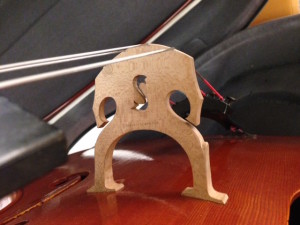CelloBello János Starker Remembrance Week: Life as a Student of János Starker
Brant Taylor
János Starker’s incomparable achievements as a performer and recording artist are well-documented. However, when I first appeared at his door as a new graduate student, my awareness of him mostly stemmed from hearing others speak about him, and from only one of his recordings: that of Zoltan Kodaly’s Sonata, Op. 8. I had developed a mental image of Mr. Starker as an austere, intimidating presence.
Paul Katz, with whom I had been studying at Eastman, enjoyed a longstanding friendship with Mr. Starker, and in those years Paul would often send a graduating senior to Bloomington for further education.
It didn’t take me long to understand the significance of being a member of Mr. Starker’s class. Lessons were open to all of his students, and after adjusting to the added vulnerability of having lessons in full view of my peers, I came to appreciate the sense of community it fostered. More than that, his open-door policy offered an invaluable opportunity: to observe Mr. Starker teaching others. I cleared any afternoon I could and camped out in a chair against the studio wall opposite the prominently-positioned, framed image of David Popper.
The man I came to know firsthand was neither cold nor cruel (words used by others), but soft-spoken and warm with a decidedly wry sense of humor. Mr. Starker clearly viewed teaching as his most significant activity, and always had. We students had the sense that he would have done almost anything for us. His succinct summations of our in-lesson performances, usually spoken with a puff of cigarette smoke, were profoundly insightful, painfully accurate, and often priceless. Some of his one-liners had rightfully become legendary at IU.
Nobody ever told me to avoid taking the same repertoire into a lesson more than once, but the expectation that we students would learn music quickly was implicit in the studio atmosphere. Mr. Starker liked efficiency, and naturally that applied to our practice and learning. While he wasn’t opposed to hearing the same repertoire, it certainly interested him more whether we could apply the principles under discussion in a given lesson to the next piece. Afraid of disappointing him or wasting our time together by retreading on familiar ground, I tried to keep pace.
Eventually, I brought some repertoire I had studied as an undergraduate to Mr. Starker. One such work was Britten’s First Suite. Without announcing the piece, I dove in and played the first few movements. To my surprise, Mr. Starker asked me what it was, commenting he didn’t recognize it. Because of a complex relationship with Rostropovich which I never fully understood, Mr. Starker hadn’t gone out of his way to champion many of the works closely associated with the great Russian master.
Besides Mr. Starker’s high-powered perception, thoughtful verbal descriptions, and other pedagogical interactions with his students, every lesson included at least some of his playing, breathtaking in its finesse and fluidity. He believed that the ability to demonstrate at a high level is of immense value to an effective teacher. I wish every developing musician could be so fortunate to sit a few feet from teachers whose demonstrations so clearly distill and illustrate their stated values and goals.
What are those values? While the breadth and completeness of Mr. Starker’s teaching isn’t easily condensed, there are concepts he returned to frequently. They cannot fail to affect anyone who chooses to examine their implications closely:
- Music is a classic discipline with parallels to dance, theater, and poetry, and we should study it as such. The composer’s musical message is paramount, and as interpreters, the clarity with which we convey that message is our great responsibility. And we can only attain that freedom of expression through dedication and disciplined study.
- Success or failure depends on recognizing the profound influence of a handful of basic principles that underlie not just cello playing, but all great instrumental playing. If we identify the causes of our actions at their deepest and most fundamental level, we can successfully navigate through our challenges rather than continually swat at the symptoms.
- There is a time and place for musical coaching, but that act is not the same as cello teaching. True instrumental teaching means helping students identify and address the areas where they are blocking themselves from being able to achieve their musical aims fully with their instrument. There is little point in coaching someone to play more pianissimo, or to make a certain phrase, or to stay on the D string for a particular color, if the player does not yet have a grasp of the fundamentals that make those musical aims reachable.
- Both our bodies and our instruments are machines, and it is helpful to understand them as such. It is possible to operate them well or poorly. There is no aspect of technique that can’t be examined and discussed in order to understand and improve. We are only limited by our own curiosity, as asking questions inspires a search for better solutions to the challenges we face.
- If we want to match our physical language as closely as possible to the music we are about to play, then it should become obvious that wild and flailing gestures, facial contortions and other theatrical antics—while some performers employ them to great effect for an audience—are unnecessary, and worse, can carry us further away from the musical “truth.” Giving the impression of doing physical battle with an instrument is not a musical endeavor at all, but an athletic one.
Mr. Starker has stated that his interest in teaching a particular student did not depend exclusively (or even primarily) on how he or she played. He wanted students he felt he could help, and people who were ready and able to receive and understand the information he had to pass on. Nobody has a monopoly on good information, but passing on the best of what we have learned from our teachers and discovered for ourselves is one of our most important responsibilities as instrumentalists.
Go to cellobello.org/chat at 8:30 PM this evening, April 22, and join Brant Taylor in conversation.
Subjects: Artists

